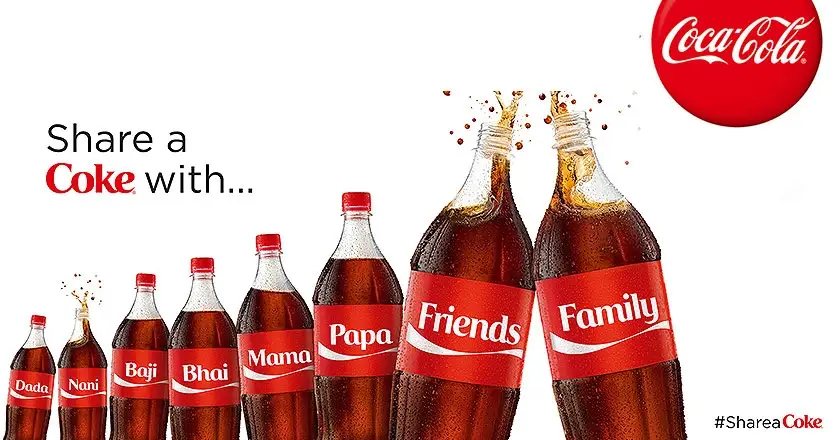
Story-driven Success: The Essence of Ad Films
Storytelling in ad film making has evolved as a crucial element in the world of marketing and communication. This technique not only captures the audience’s attention but also builds a deeper emotional connection between the brand and its consumers. In this extensive exploration of the role of storytelling in ad film making, we will delve into various aspects of storytelling, its importance, techniques, and statistical evidence supporting its effectiveness.
Introduction to Storytelling in Advertising
Storytelling is the art of conveying messages, ideas, and emotions through a structured narrative. In advertising, storytelling transcends traditional promotional methods by weaving narratives that resonate with audiences on a personal level. This approach transforms ads from mere information delivery into captivating stories that engage viewers emotionally and intellectually.
Importance of Storytelling in Ad Films
Emotional Connection
Engagement and Retention: Stories evoke emotions, which in turn lead to better engagement and retention. An emotionally charged narrative can make an ad memorable, ensuring that the audience recalls the brand long after the ad has ended.
Brand Loyalty: Emotional storytelling fosters brand loyalty. When consumers emotionally connect with a story, they are more likely to develop a lasting relationship with the brand.
Humanizing the Brand
Relatability: Storytelling allows brands to present themselves as more than just businesses. It humanizes them, making them relatable and approachable. This human aspect can be a significant factor in consumer decision-making.
Trust Building: A well-crafted story can build trust by showcasing a brand’s values, mission, and vision. Consumers are more likely to trust a brand that appears genuine and transparent through its stories.
Differentiation
Unique Identity: In a saturated market, storytelling helps brands stand out by creating a unique identity. A distinctive narrative can differentiate a brand from its competitors.
Memorability: Unique and compelling stories are more memorable than standard advertising techniques. They create a lasting impression on the audience’s mind.
Engagement Across Multiple Platforms
Versatility: Stories can be adapted across various media platforms, including TV, social media, and digital channels. This versatility ensures consistent brand messaging.
Interactive Content: Storytelling facilitates interactive content, such as immersive videos, interactive websites, and social media campaigns, enhancing audience engagement.
Techniques of Effective Storytelling in Ad Films
Identifying the Core Message
Clarity and Focus: The core message should be clear and focused. It should align with the brand’s values and resonate with the target audience.
Creating Relatable Characters
Protagonists: Characters should be relatable and reflective of the audience’s experiences, aspirations, or challenges.
Antagonists: Incorporating challenges or antagonists can create tension and conflict, making the story more engaging.
Crafting a Compelling Narrative Arc
Beginning, Middle, and End: A well-structured narrative arc with a clear beginning, middle, and end helps maintain audience interest.
Conflict and Resolution: Introducing conflict and its eventual resolution keeps viewers invested in the story.
Using Visual and Auditory Elements
Visual Imagery: High-quality visuals, colors, and graphics enhance the storytelling experience.
Music and Sound Effects: Background music and sound effects can evoke emotions and set the tone of the story.
Emphasizing Authenticity
- Real Stories: Authentic and real stories resonate more with audiences than fictional ones. Brands often use real customer testimonials or behind-the-scenes footage.
- Transparency: Being transparent and genuine in storytelling builds credibility and trust.
Case Studies and Examples
Nike’s “Just Do It” Campaign

- Narrative: Nike’s iconic “Just Do It” campaign is a prime example of effective storytelling. It features real athletes and their struggles, triumphs, and personal stories.
- Impact: The campaign has significantly boosted Nike’s brand image, leading to increased sales and customer loyalty. According to a report by Statista, Nike’s revenue increased from $3 billion in 1988, the year the campaign launched, to over $44 billion in 2021.
Dove’s “Real Beauty” Campaign

Narrative: Dove’s “Real Beauty” campaign challenges conventional beauty standards by featuring real women of various shapes, sizes, and ethnicities.
Impact: The campaign has not only increased Dove’s market share but also sparked a global conversation about beauty standards. It contributed to a significant rise in sales, with a reported increase of over $1.5 billion within the first decade of the campaign.
Coca-Cola’s “Share a Coke” Campaign


Narrative: Coca-Cola’s “Share a Coke” campaign personalized bottles with people’s names, encouraging customers to share a Coke with friends and family.
Impact: The campaign led to a 2% increase in U.S. sales and a significant boost in brand engagement on social media. According to Coca-Cola, the campaign resulted in more than 500,000 photos shared on social media with the #ShareaCoke hashtag.
Statistical Evidence Supporting Storytelling in Ad Films
Consumer Engagement and Retention
- Nielsen Study: According to Nielsen, ads that use storytelling techniques result in a 30% higher engagement rate compared to non-story-based ads.
- Harvard Business Review: A study published in the Harvard Business Review found that emotional content can double the likelihood of an ad being shared.
Brand Recall and Recognition
- Journal of Advertising Research: Research published in the Journal of Advertising Research indicates that narrative ads generate a 220% increase in brand recall compared to non-narrative ads.
- Psychology & Marketing: A study in the journal Psychology & Marketing revealed that storytelling in ads enhances brand recognition by up to 50%.
Sales and Revenue
McKinsey & Company: A report by McKinsey & Company highlighted that brands employing storytelling in their marketing strategies saw a 20% increase in sales compared to those that did not.
Content Marketing Institute: According to the Content Marketing Institute, storytelling can boost conversion rates by 30%.
Emotional Impact and Loyalty
Journal of Consumer Research: The Journal of Consumer Research published findings that emotional ads increase brand loyalty by 40%.
Accenture Interactive: Accenture Interactive reported that 83% of consumers are more likely to do business with brands that evoke positive emotions through their stories.
Future Trends in Storytelling and Ad Films
Interactive and Immersive Storytelling
Virtual Reality (VR): VR technology allows for immersive storytelling experiences, providing audiences with a more engaging and interactive way to connect with brands.
Augmented Reality (AR): AR enhances storytelling by blending digital content with the real world, creating unique and personalized experiences.
Personalized Storytelling
Data-Driven Narratives: Brands can leverage data to create personalized stories that cater to individual preferences, behaviors, and demographics.
AI and Machine Learning: AI and machine learning enable the creation of dynamic and adaptive stories that evolve based on user interactions and feedback.
Sustainability and Social Impact Stories
Purpose-Driven Narratives: Consumers are increasingly drawn to brands that demonstrate social responsibility and sustainability. Storytelling focused on social impact can build stronger connections with socially conscious consumers.
Environmental Themes: Ads highlighting environmental issues and sustainability efforts resonate with eco-conscious audiences, fostering brand loyalty.
Short-Form and Snackable Content
Micro-Stories: With the rise of social media platforms like TikTok and Instagram, short-form storytelling has become popular. Brands are creating snackable content that conveys powerful messages in a brief and engaging manner.
Episodic Content: Episodic storytelling, where a narrative unfolds over multiple short episodes, keeps audiences engaged and coming back for more.
Challenges and Considerations
Balancing Story and Brand Message
Avoiding Overemphasis on Story: While storytelling is crucial, it should not overshadow the core brand message. The story should enhance and reinforce the brand’s values and offerings.
Maintaining Authenticity: Authenticity is key. Audiences can quickly detect insincerity, which can damage a brand’s reputation. Ensuring that stories are genuine and align with the brand’s ethos is essential.
Measuring Effectiveness
Analytics and Metrics: Measuring the impact of storytelling can be challenging. Brands need to establish clear metrics and use analytics tools to track engagement, recall, and conversion rates.
Feedback and Adaptation: Continuous feedback from the audience can help refine and adapt storytelling strategies to ensure they remain effective and relevant.
Cultural Sensitivity
- Global Audiences: In a global market, cultural sensitivity is crucial. Brands must ensure their stories are culturally appropriate and resonate with diverse audiences.
- Avoiding Stereotypes: Stereotypes can alienate and offend audiences. Inclusive and respectful storytelling can build a positive brand image.
Storytelling in ad film making is more than a trend; it is a fundamental shift in how brands communicate with their audiences. By crafting compelling narratives, brands can create emotional connections, build trust, and differentiate themselves in a crowded marketplace.

